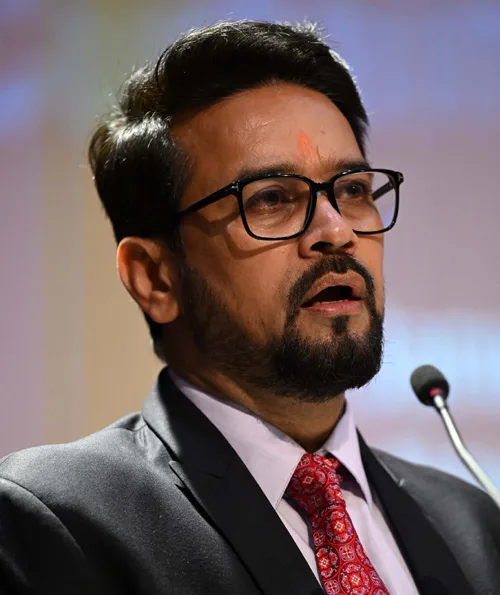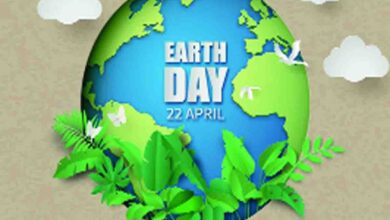Matters of the mind: PM Modi’s Mann ki Baat

 Anurag Singh Thakur
Anurag Singh Thakur
Prime Minister Narendra Modi is universally acknowledged as an exceptionally gifted communicator who can establish instant rapport with the masses. His daunting oratorial skills are only one of the explanations for this unique ability. The sincerity with which he speaks, the integrity which he is known for and the trust-based relationship he has struck with the people over the past eight years all contribute to his success as a mass communicator.
His inclusionary approach has found unprecedented acceptance across demographies. It’s PM Modi’s people-centric model of development that has endeared him to the vast multitudes. And it’s his non-elitist idea of a continuous dialogue with the people that led to what we now know as ‘Mann ki Baat’, launched in October 2014. Over the years it has become a last-Sunday-of-the-month fixture. It began as a radio talk; it is now simultaneously broadcast from various platforms in multiple languages.
Mann ki Baat shows there are two Modis – the strong, powerful, purposeful Prime Minister Modi and the soft, kindly, gentle paterfamilias Modi. If you were to shut yours eyes and listen to Mann ki Baat, you would think that Modi was sitting at a village chaupal, conversing with people – listening to them, speaking to them, and offering sage advice where needed, or complimenting someone for an exemplary deed. Recently he shared his conversation with families of accident victims who had bravely decided to donate organs of their loved ones. Modi used that conversation to promote the noble idea of organ donation.
One could cite numerous such examples, ranging from coping with climate extremes to health and hygiene to complimenting ordinary people with extraordinary hearts for their good deeds. PM Modi’s Mann ki Baat is essentially about real life stories and experiences, stories that reflect the real India that exists beyond the narrow confines of Lutyens’s Delhi. This explains why each episode of Mann ki Baat is wildly popular and receives tens of thousands of responses. It resonates with the people as it is about their concerns.
The first episode of Mann Ki Baat was aired on October 3, 2014. It will complete 100 episodes on April 30, 2023. Mann Ki Baat is unique in terms of its subject matter, design, interaction, and innovative way of communicating with people and society as a whole. Through All India Radio, the largest radio network in the world with 262 radio stations and over 375 private and community radio stations, the Prime Minister of India reaches a vast spectrum of the socio-economically and culturally diverse populace, inspires and energises them not just on social, cultural and economic issues but challenging problems that the world is facing today, such as climate change, waste management, energy crisis, etc.
Prasar Bharati, the Indian public service broadcaster undertakes the translation and broadcast of Mann Ki Baat in 52 languages/dialects including 11 foreign languages, catering to the remotest regions in the country while also taking it to the Indian diaspora. Mann Ki Baat is India’s first virtually enriched radio program that is simultaneously broadcast by TV channels. Thirty four channels of the Doordarshan network and over 100 private satellite TV channels broadcast this innovative programme across the lengths and breadths of the country, creating a renewed interest and awareness about this traditional medium of communication. A smartly curated booklet, with articles of experts and change makers from various walks of life, is also published each month since February 2022, reaching over 60 million people digitally.
With such a colossal impact, Mann Ki Baat has been termed widely (and rightfully so) as a social revolution and finds its solid base in Jan Bhagidari. The programme has been conceived and implemented around the idea of citizen engagement and participation right from the formulation of the name of the show to the choice of subjects and calls to action that the PM includes in this programme. Every episode is a curation of a monthly reminder of the PM’s unshaken faith in the transformative power of individuals and is instrumental in encouraging Jan Bhagidari in governance. Through Mann Ki Baat, the PM has been able to reach out to millions of people across the country. He uses the platform to share his vision for the country and seeks the participation of citizens in the nation-building process.
The primary objective of Mann Ki Baat is to build a direct connect between the Prime Minister of India and its citizens. Every month, the PM receives millions of letters from across the nation, which he sheds light upon during the programme. It is also not uncommon for the PM to have telephonic conversations with the people during the show. Such a mode of communication between the elected leader and the masses significantly strengthens people’s belief in democracy and governance.
Throughout its successful course of 99 episodes spanning over eight years, Mann Ki Baat has endeavoured to not only generate awareness in the masses about important issues but inspire them to take action on social and national causes. One of the key features of the programme is the inspiring stories of change-makers who are working relentlessly and selflessly on the ground which not only becomes a source of motivation for them to keep on working but also inspires millions of others.
Since its inception, Mann Ki Baat has emerged as an effective tool of Jan Andolan catalysing social movements involving communities across the nation. The social messages delivered by the Prime Minister in the programme become a social media trend in a matter of few hours as well as a mass movementin a few weeks. Swachchh Bharat Abhiyan, Beti Bachao Beti Padhao, COVID vaccination and Har Ghar Tiranga are a few glorious examples of the same. Recently, in the 88th episode of Mann Ki Baat, the PM highlighted the importance of water conservation and urged the citizens to build Amrit Sarovars in their locality. Within a few months, the message was converted into a janandolan and numerous Amrit Sarovars emerged across the nation which were created by locals with the help of government bodies of the region. Subsequently, on the 92ndepisode, the PM lauded the prompt efforts of the citizens as he mentioned various Amrit Sarovars like Bhagat Singh Amrit Sarovar in Lalitpur of Uttar Pradesh and Amrit Sarovar in Bilkerur of Karnataka.
Furthering the vision of building a ‘Sashakt Bharat’, Mann Ki Baat is focused on highlighting the national and global successes of the nation urging people to participate in the nation’s development while instilling a sense of pride, belonging and nationalism in the citizens. In the 89th episode, the PM highlighted the number of unicorns in India reaching the figure of 100; the 91st episode celebrated the mass participation and nationwide success of the Har Ghar Tiranga campaign, swelling the hearts of every Indian with pride, and many more such examples showcase how Mann Ki Baat is not just a radio programme, but a reflection of India’s holistic development and an expression of public participation.
With Mann Ki Baat, the PM has successfully established a mechanism to take welfare schemes and policies to the people at every level and generate awareness about the same. Not only that, but the PM also shares success stories of how these schemes benefit people at the grass-root levels to motivate more and more people to become a beneficiary.
Even during times of crisis, the programme has played an important role in keeping people informed, as during the Covid pandemic, and motivating them to get vaccinated. India’s vaccine story owes its success in great measure to Mann ki Baat. That alone is tribute enough to the relevance of Mann ki Baat and its significance in our lives.
(The author is the Union minister for Information and Broadcasting. Views expressed are personal)





